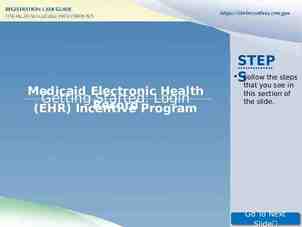West Nile Virus West Nile Fever West Nile Disease Lordige West Nile
50 Slides5.74 MB

West Nile Virus West Nile Fever West Nile Disease Lordige West Nile Neuroinvasive Disease Near Eastern Equine Encephalitis

Overview Organism History Epidemiology Transmission Disease in Humans Disease in Animals Prevention and Control Center for Food Security and Public Health, Iowa State University, 2011

The Organism

The Organism Flaviviridae – Flavivirus Single stranded RNA virus 2 genetic lineages – Linage 1 3 clades (1a, 1b, 1c) Infects humans, birds, mosquitoes, horses, other mammals and Center for Food Security and Public Health, Iowa State University, 2011

History

History 1937: West Nile District, Uganda – First isolated 1950: Egypt – Ecology studied Additional outbreaks – – – – 1951-54, 1957, Israel 1962, 2000: France 1973-74: South Africa 1996: Romania, 1998: Italy Center for Food Security and Public Health, Iowa State University, 2011

Epidemiology

United States - 1999 New York City – 62 cases; 7 deaths Zoo birds, crows, horses also infected Caused by lineage 1a – NY99 First appearance of WNV in the western hemisphere Center for Food Security and Public Health, Iowa State University, 2011

WNV Activity - 1999 NYC Mosquitoes Birds Humans Center for Food Security and Public Health, Iowa State University, 2011

NYC WNV Cases - 1999 Center for Food Security and Public Health, Iowa State University, 2011

WNV Emergence in the U.S. Possible modes of introduction – Infected human host – Human-transported vertebrate host Legal Illegal – Human-transported vector(s) – Storm-transported vertebrate host (bird) – Intentional introduction Center for Food Security and Public Health, Iowa State University, 2011

Human WNV Activity - 2003 Center for Food Security and Public Health, Iowa State University, 2011

Human WNV Activity - 2010 Center for Food Security and Public Health, Iowa State University, 2011

Human WNV Activity Year Cases Deaths 1999 62 7 2000 21 2 2001 66 9 2002 4156 284 2003 9862 264 2004 2539 100 2005 3000 119 2006 4269 177 2007 3630 124 2008 1356 44 2009 720 32 2010 1021 57 Center for Food Security and Public Health, Iowa State University, 2011

Equine WNV Activity – 2010 Center for Food Security and Public Health, Iowa State University, 2011

Transmission

Incidental hosts Amplifying hosts Humans, horses, and other animals Birds Vectors Culex spp., Aedes spp., Ochlerotatus spp. Center for Food Security and Public Health, Iowa State University, 2011

Transmission Primary mosquito vector – Culex spp. Tick vectors – Asia, Russia – Role in transmission not clear Center for Food Security and Public Health, Iowa State University, 2011

Culex pipiens Center for Food Security and Public Health, Iowa State University, 2011

Culex restuans Center for Food Security and Public Health, Iowa State University, 2011

Culex salinarius Center for Food Security and Public Health, Iowa State University, 2011

Aedes vexans Center for Food Security and Public Health, Iowa State University, 2011

Transmission Overwintering of mosquitoes Transovarial transmission Birds – Contact – Migratory transport Center for Food Security and Public Health, Iowa State University, 2011

Human Transmission Direct contact – Infected birds, tissues Laboratory acquired Blood transfusions – Screening implemented in 2003 Organ transplants Transplacental transmission Breast feeding Center for Food Security and Public Health, Iowa State University, 2011

Disease in Humans

Disease in Humans Incubation: 2 to 14 days Many WNV infections asymptomatic Two forms of disease West Nile fever – – – – Most common form Resembles influenza Most infections resolve in 2 to 6 days Persistent fatigue can occur Center for Food Security and Public Health, Iowa State University, 2011

Disease in Humans West Nile neuroinvasive disease – Occurs rarely Progression of West Nile fever – Can be severe and life-threatening – Three syndromes Encephalitis Meningitis Acute flaccid paralysis – Persistent neurological dysfunction may occur Center for Food Security and Public Health, Iowa State University, 2011

Diagnosis in Humans Serology – Serum or CSF – IgM capture ELISA Cross reactions possible – Plaque neutralization test Detection of virus, antigen, or nucleic acids – RT-PCR – Immunohistochemistry Center for Food Security and Public Health, Iowa State University, 2011

Treatment in Humans No specific therapy Supportive care Therapies in clinical trials – – – – Interferon Antisense nucleotides IV immunoglobulin Antiviral drugs Center for Food Security and Public Health, Iowa State University, 2011

Disease in Animals

Species Affected Horses* Black Bear* Bats* Goats* Sheep* Dog* Wolf* Alpaca* Mountain Goat Llama* Cattle* Seal* Rabbit Alligator* Cat* Chipmunk Gray Squirrels* Deer* Skunk* Crocodile* Center for Food Security and Public Health, Iowa State University, 2011

Clinical Signs - Horses Many asymptomatic Anorexia Ataxia Weakness Teeth grinding Convulsions Circling Tremors Difficulty swallowing Attitudinal changes Facial edema Colic Urinary dysfunction Complications Mortality – Many euthanized Center for Food Security and Public Health, Iowa State University, 2011

Diagnosis and Treatment - Horses Diagnosis – Live: serology – Dead: WNV detection at necropsy Brain and spinal cord RT-PCR, immunohistochemistry Treatment – No specific treatment, supportive care – Therapy is empiric Center for Food Security and Public Health, Iowa State University, 2011

Clinical Signs - Ruminants Frequently a single animal affected Neurological signs – Sheep, alpacas, reindeer, white-tailed deer Most affected animals die within 1 to 2 days Reproductive signs may be seen in sheep Center for Food Security and Public Health, Iowa State University, 2011

Clinical Signs – Dogs, Cats Dogs and cats Often asymptomatic Rarely Fever, depression Muscle weakness, spasms Seizures, paralysis Myocarditis Suspect WNV in animals exhibiting neurological and cardiac symptoms Center for Food Security and Public Health, Iowa State University, 2011

Clinical Signs – Dogs, Cats Experimental infection – Mosquito bite: dogs All dogs showed viremia, no clinical signs – Mosquito bite: cats All cats showed viremia All but one showed mild clinical signs – Infected prey: cats All cats developed viremia None showed clinical signs Conclusion – Readily infected, not amplifying hosts Center for Food Security and Public Health, Iowa State University, 2011

Clinical Signs - Wildlife Birds – Commonly found dead (e.g., Corvids) Bats, chipmunks, skunks, and domestic rabbits – Majority do not develop clinical signs Gray Squirrels – Lethargy, paw biting, vocalization, ataxia, circling, encephalitis, myocarditis Center for Food Security and Public Health, Iowa State University, 2011

Prevention and Control

Vaccination Several commercial vaccines available for horses – Consult label for instructions – Usually 2 doses, 3 to 6 weeks apart – Annual revaccination Vaccines sometimes used off-label to protect birds Center for Food Security and Public Health, Iowa State University, 2011

Mosquito Management Surveillance Source reduction Personal protection Biological control Larvicide Adulticide Center for Food Security and Public Health, Iowa State University, 2011

Surveillance Dead bird testing Sentinel chicken flocks Mosquito collection – Test for pathogens – Account for species Larval and adult mosquitoes – Map habitats – Record keeping Center for Food Security and Public Health, Iowa State University, 2011

Source Reduction Eliminating larval habitats – Tires, bird baths, containers, rain gutters, unused swimming pools Center for Food Security and Public Health, Iowa State University, 2011

Source Reduction Making habitats unsuitable for larval development Public education Marsh water management – Drain, fish access, gated Center for Food Security and Public Health, Iowa State University, 2011

Personal Protection Reduce time outdoors – Especially evening hours Long pants and sleeves Use mosquito repellent – 35% DEET – Do not use DEET on animals Keep window screens intact Use yellow “bug” light bulbs in outdoor light fixtures Center for Food Security and Public Health, Iowa State University, 2011

Biological Control Utilizes predators, both natural and introduced, to eat larvae and pupae – Mosquito fish Gambusia affinis, G. holbrooki most common Fundulus spp., Rivulus spp., killifish Other agents have been used but are not readily available – Fungus, protozoa, nematodes – Copepods Center for Food Security and Public Health, Iowa State University, 2011

Larvicides Use when source reduction and biological control not feasible More effective and target-specific Less controversial than adulticides Applied to smaller geographic areas – Larvae concentrate in specific locations Center for Food Security and Public Health, Iowa State University, 2011

Adulticides When other control measures unsuccessful Least efficient Proper type and time of application helps efficacy – Ultra Low Volume foggers 1 ounce per acre – Small droplets contact and kill adults Center for Food Security and Public Health, Iowa State University, 2011

Biosafety Mosquito avoidance precautions – Bug spray, long sleeves, etc. Wear gloves or double plastic bags to collect dead birds Wash hands after handling Manipulate carcasses in biosafety cabinet when possible for necropsy Center for Food Security and Public Health, Iowa State University, 2011

Additional Resources U.S. Department of Agriculture (USDA) – www.aphis.usda.gov Centers for Disease Control and Prevention (CDC) – http://www.cdc.gov/ncidod/dvbid/westnile/ index.htm Center for Food Security and Public Health – www.cfsph.iastate.edu Center for Food Security and Public Health, Iowa State University, 2011

Acknowledgments Development of this presentation was funded by grants from the Centers for Disease Control and Prevention, the Iowa Homeland Security and Emergency Management Division, and the Iowa Department of Agriculture and Land Stewardship to the Center for Food Security and Public Health at Iowa State University. Authors: Radford G. Davis, DVM, MPH; Ann Peters, DVM, MPH; Stacy Holzbauer, DVM; Jared Voge, MS Reviewers: Jean Gladon, BS; Kerry Leedom Larson, DVM, MPH, PhD Center for Food Security and Public Health, Iowa State University, 2011






